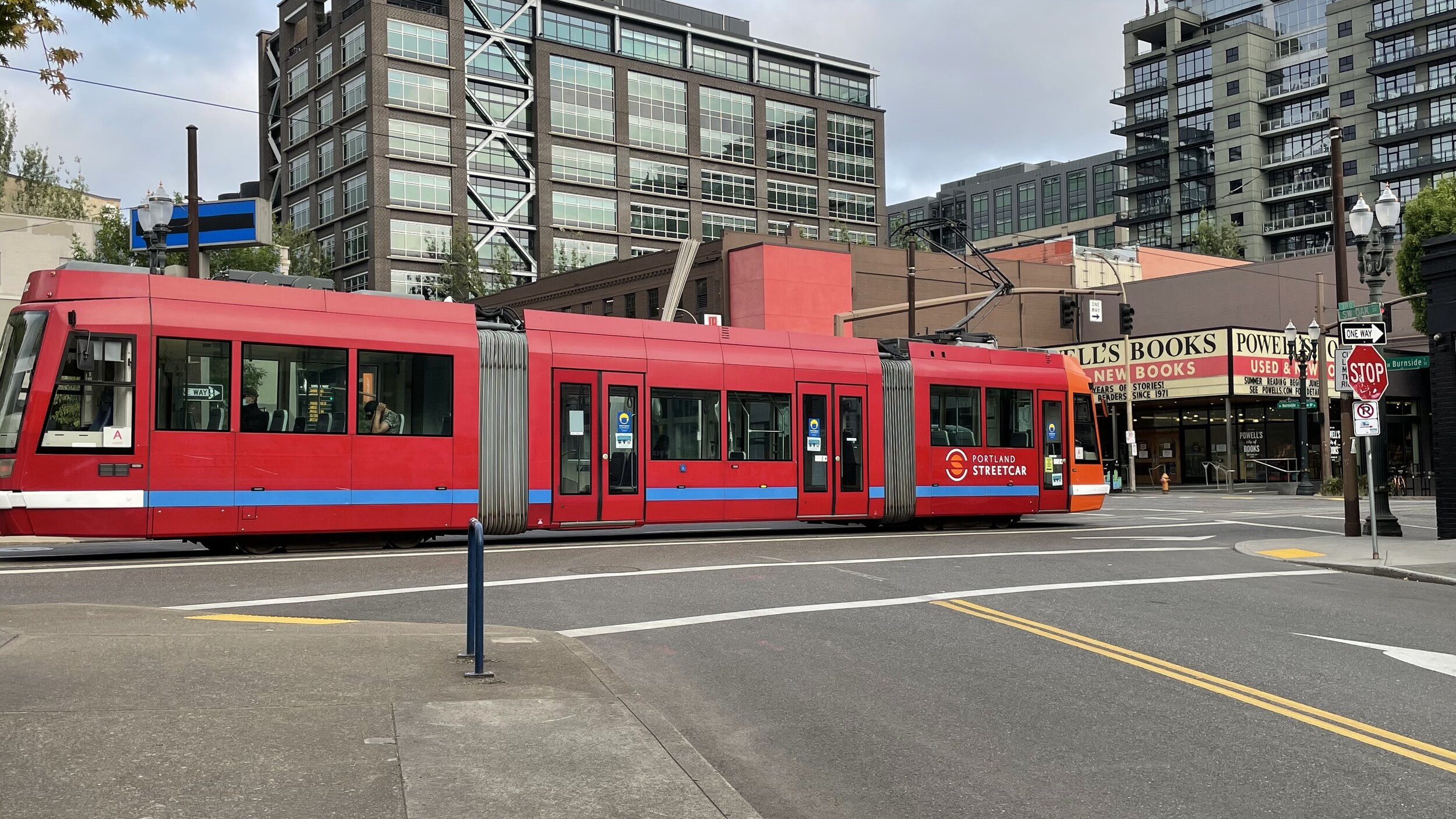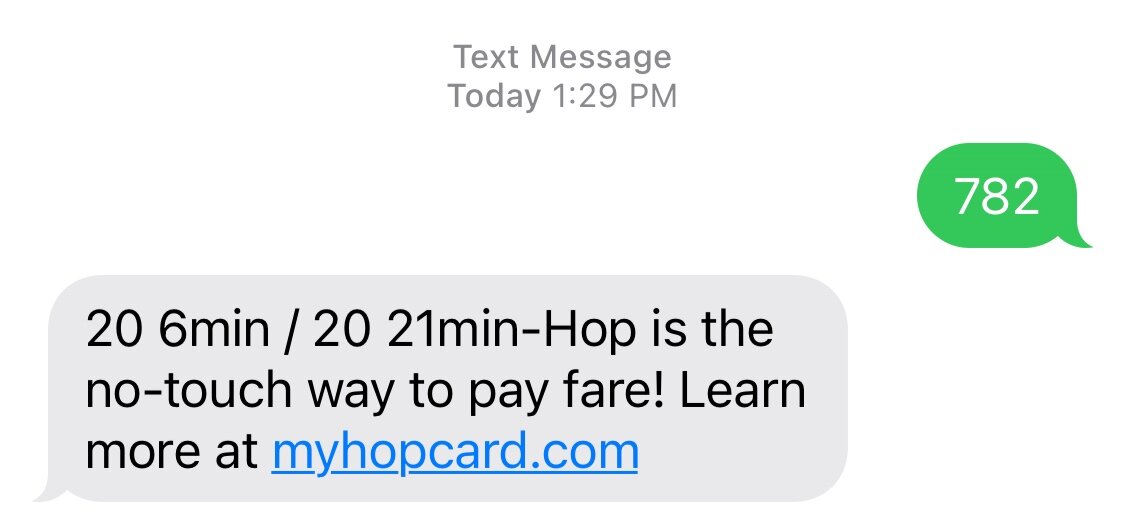Note: The following is an excerpt from Chapter 7 of The Guaranteed Customer Experience.
Daniel Pascoe has never owned a car.
That might seem inconceivable to many people, but a car isn't necessary if you live in a city that has reliable public transportation—like Portland, Oregon. Portland's transportation system is run by TriMet, which provides bus, light rail, and commuter rail service.
Pascoe uses the bus to get to work and visit other parts of town. He occasionally uses TriMet's MAX light rail.
A MAX light rail train arriving at the Portland International Airport.
"The MAX is really convenient when you're going to the airport," he explained. "It takes you right into the terminal."
It’s an easy walk into the terminal from the MAX light rail stop at Portland International Airport.
Customers like Pascoe are trying to solve a transportation problem. They need to get from one place to another, and TriMet makes two fundamental promises to help them. The first is the published routes, which assure passengers they can get from their starting point to their destination. The second is the schedule, which promises to get passengers there by a certain time.
For Pascoe, TriMet's ability to consistently keep those promises makes him a fan of the service. He knows he can depend on TriMet to get him to work, or wherever else he wants to go, on time. "Reliability is a positive that TriMet is known for."
Monitoring for Broken Promises
One of the most important aspects of a Guaranteed Customer Experience is a system to ensure promises are being kept.
TriMet has something called the Operations Command Center to monitor its transportation network and provide real-time information and updates to operators, passengers, and other critical stakeholders. Video screens line the walls. Some show live camera feeds from various points along bus routes and rail lines, while others are continuously updated with important data. Employees are in contact with bus and train operators, repair crews, and other relevant personnel.
The command center is staffed 24 hours per day, seven days a week, with as many as 30 employees at any given time. The center is divided into three teams, with each team monitoring their section of Portland's geographical region. Employees keep an eye on buses, light rail lines, and trains to ensure they're running on time and to detect problems as quickly as they happen.
A Portland Streetcar moves past Powell’s Books in downtown Portland.
Jon Bell is TriMet's senior manager of customer experience. He explained that the command center employees are charged with helping TriMet keep its brand promise: We connect people with their community.
"We're not buses and trains," said Bell. "We're connecting people to life. We are truly the thread of the community, connecting people to jobs, school, family, and friends."
Bell understands that thousands of passengers rely on TriMet to be on time. "The moment you break that promise, that is a moment of truth." People won't trust TriMet if it's not reliable.
Employees in the Operations Command Center spring into action when an issue is detected and there's a danger that a bus or train might be delayed. They share alerts about accidents, construction, traffic congestion, and other problems. Command center employees work with bus and train operations to coordinate a solution to keep passengers moving while providing updated information on the status.
Passengers have a wide range of options for staying updated on transit schedules. The TriMet website features trip-planning tools, real-time arrival information for each route and station, and service alerts.
TriMet’s online trip planning tool.
Passengers can sign up to get alerts via email or text. Route stops have a unique ID that passengers use to get arrival information via text.
Text alert from bus stop #782. There is a #20 bus 6 minutes away and another one 21 minutes away.
Busier stops also have electronic display boards listing the expected arrival time of incoming buses or trains.
A display board at a TriMet bus stop shows the expected arrival times for buses.
Critical updates are provided on social media, and passengers can call TriMet to get arrival times or assistance planning a trip. There are also third-party apps, like Moovit, that share updated information.
Customer-focused organizations like TriMet create robust systems to monitor customer experience and sound alarms when promises might be broken. While many of these systems might appear insanely complicated, they're based on two simple questions:
What promises are we making?
How do we know we're keeping our promises?
Responding to Broken Promises
Monitoring for broken promises allows you to identify problems and fix them quickly.
I experienced TriMet's responsiveness while riding the MAX light rail to the airport. The train had just pulled into a station when the operator announced a delay. Passengers exchanged worried looks as they wondered if they’d still be able to catch their flight. One family of four was already cutting it close to their flight’s departure time, and they grew increasingly agitated with each passing minute.
A few minutes later, the operator announced that the train would not continue due to a problem on the track, and buses would be provided to shuttle passengers to another station where they could rejoin the light rail. People became even more nervous about their flights, unsure of when the shuttle buses would arrive or how much longer it would take to get to the airport.
The buses arrived quickly despite everyone's fears. We were efficiently transported to another station where a train was waiting to take us the rest of the way to the airport. The total delay was only about 30 minutes, and even the panicked family made it in time to catch their flight.
TriMet wins fans by keeping its promises to get passengers to a particular place by a certain time. This is an incredibly difficult challenge with multiple bus routes and rail lines spanning a wide geographical region. What really helps TriMet stand out is its ability to constantly monitor the customer experience and make adjustments before small problems become broken promises.
Conclusion
You can design your own experience monitoring system by answering two questions:
What promises are we making?
How do we know we're keeping our promises?
You can find a worksheet to guide you through the rest of the process here.
Learn more about how TriMet and other customer-focused organizations keep their promises from The Guaranteed Customer Experience.







